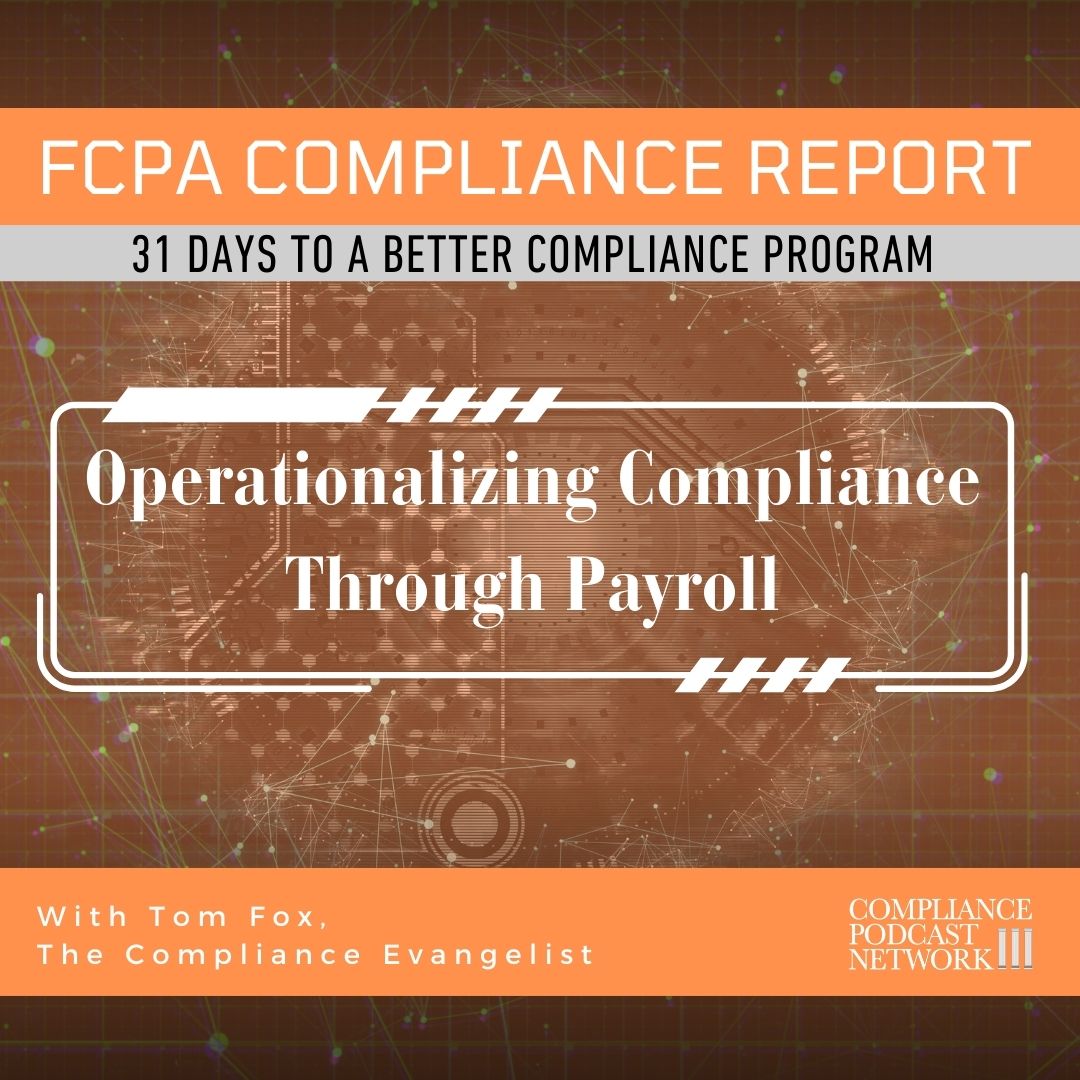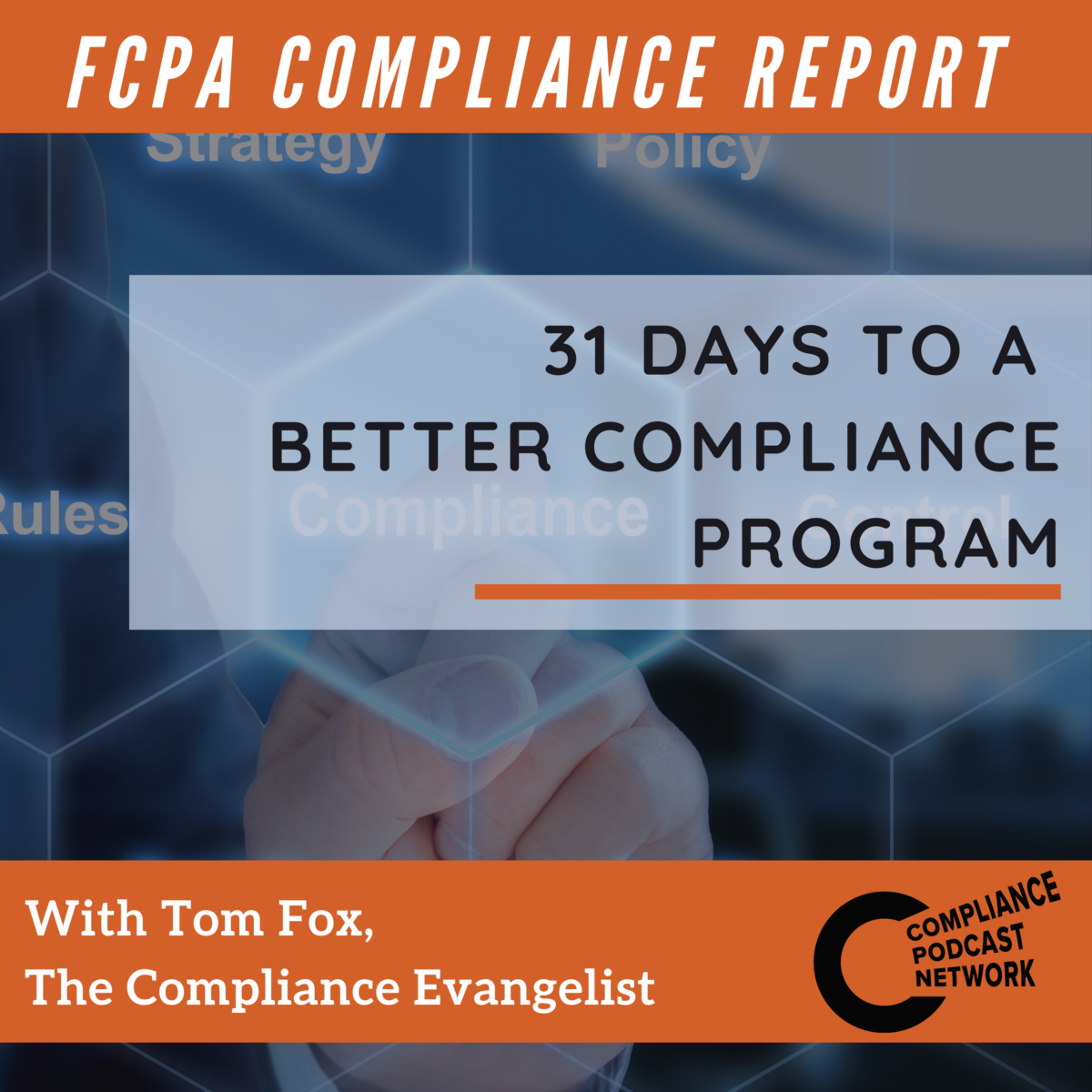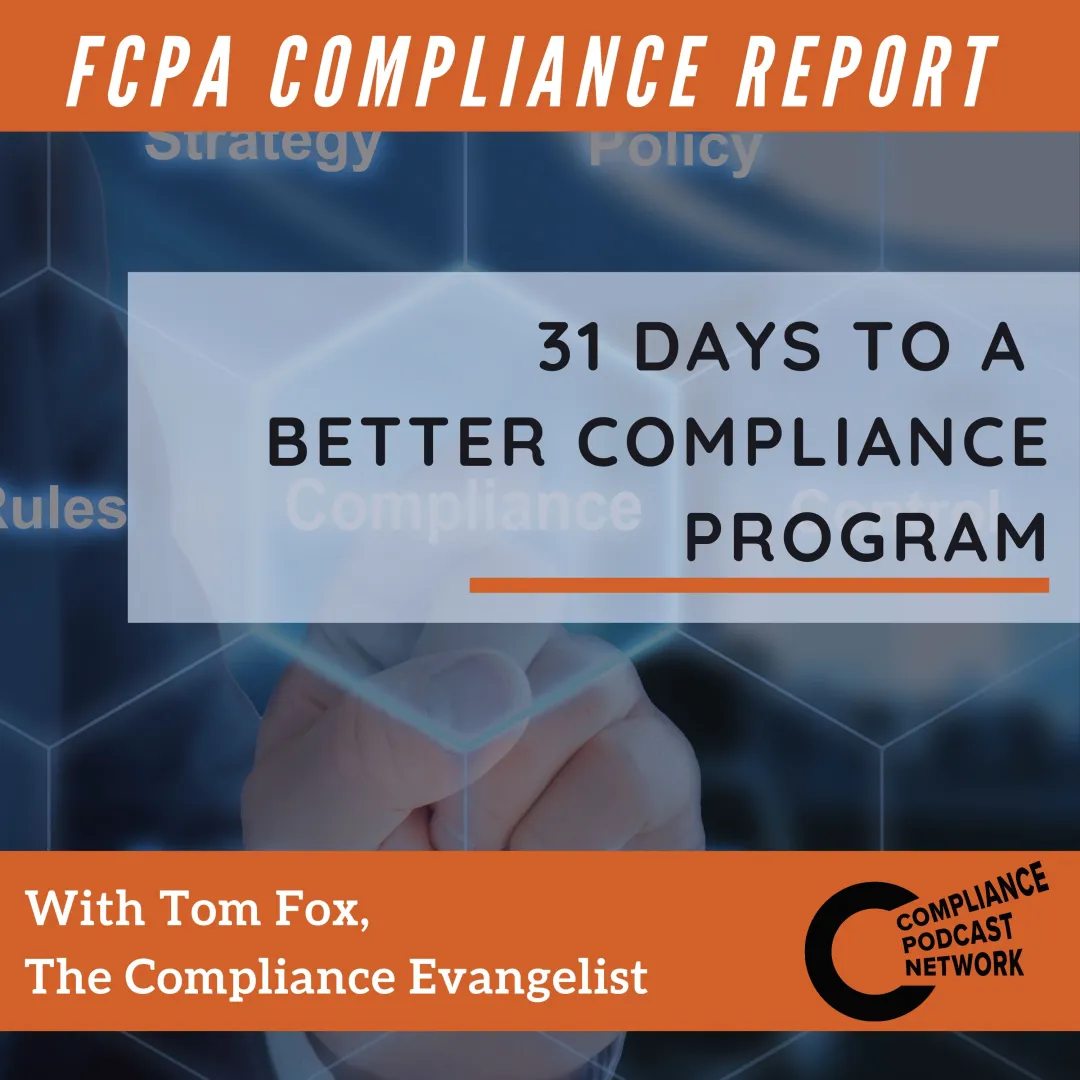Welcome to a special podcast series on the Compliance Podcast Network, 31 Days to a More Effective Compliance Program. Over these 31 days of the series in January 2025, Tom Fox will post a key part of a best practices compliance program daily. By the end of January, you will have enough information to create, design, or enhance a compliance program. Each podcast will be short, at 6–8 minutes, and will include three key takeaways you can implement at little or no cost to help update your compliance program. I hope you will join us each day in January for this exploration of best practices in compliance.
Operationalizing a compliance program through payroll is a vital component of a company’s risk management strategy, serving as both a control mechanism and a crucial link to the broader compliance function. Payroll is instrumental in identifying potential red flags, such as offshore payments, which require meticulous documentation and enhanced internal controls to prevent compliance violations. Tom Fox, a noted expert in compliance, underscores the significant role payroll plays in fortifying compliance programs by aligning with FCPA requirements and preventing fraudulent activities. He advocates for implementing demonstrable controls like Approval Certification processes, segregation of duties, and regular review procedures to mitigate compliance risks effectively. According to Tom, by embedding robust controls within payroll operations, companies deter potential violations and ensure compliance is woven into the organizational fabric, thus operationalizing their compliance programs seamlessly.
Key highlights:
- Payroll should be on the front lines of any attempt to prevent, detect, and remediate anti-corruption compliance.
- Key compliance program components for payroll.
- Watch for offshore payments.
Resources:
Listeners to this podcast can receive a 20% discount on The Compliance Handbook, 5th edition, by clicking here.





